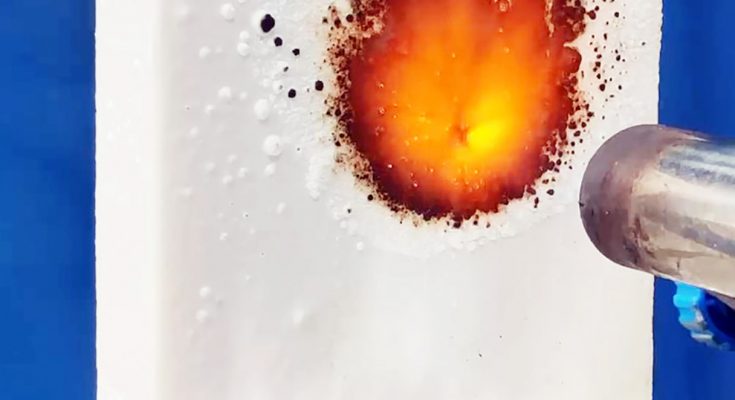#ExtinguishFire; #Researchers; #Australia; #China
With the realization that putting out the fire is time-consuming, manufacturers have been adding flame retardants to plastic, wood, and steel building materials for decades to prevent homes and workplaces from going up in smoke, https://www.science.org reports said.
Reportedly such additives can be toxic, expensive, and sometimes ineffective. A new flame-retardant was found out by researchers in Australia and China claiming that this when exposed to extreme heat, forms a ceramic layer similar to hardened lava which puts out the flames before they spread.
“This is very good work,” says David Schiraldi, a chemist at Case Western Reserve University, who has developed other flame retardants. He notes that the ceramic’s starting materials aren’t particularly expensive or toxic, making it more likely to see widespread use. “[This] could impact public safety in the long run,” https://www.science.org reports said.
With an aim to make a better flame retardant, a team of researchers led by Pingan Song, a chemist at the University of Southern Queensland, Springfield, turned to lava for inspiration.
Before molten lava is cooled and forms rocks, it is made of metal and oxygen-containing glasses that are tolerant of heat but also flow when heated. When exposed to intense heat, they form a nonflammable shell called “char” that prevents flames from reaching the material underneath and resists the conduction of heat.
Song and his colleagues used three components to make their own version. First, they created a mixture of several metal oxide powders—including oxides of aluminum, silicon, calcium, and sodium which begin to melt at about 350°C (below the temperature of most flames), forming a glass-like sheet.
Next, tiny flakes of boron nitride were added to the mixture by the researchers, which flow easily and help fill any spaces between the metal oxides as the glass forms. Finally, a fire-retardant polymer was added by them, which they described in ACS Nano in 2021. The polymer acts as a binder to glue the rest of the mixture to whatever it’s coating.
When heated by the torch, the coating spewed out nonflammable gases, such as carbon dioxide. As it did, it became denser and formed a uniform, noncombustible char layer blocking flames from spreading to the materials underneath.
The novel flame retardant protected rigid polymer foam—the kind used to insulate homes—better than more than a dozen commonly used retardants, the researchers report today in Matter. The new coating also excelled at protecting wood and steel.
If sprayed on building materials during construction, the new coating could prevent disasters like the 2017 Grenfell Tower fire in London, where 72 people died, the researchers say. Given the new coating’s performance, lack of toxicity, and ease of application, Song says it could be a “universal” fire-protection strategy, applicable for most building materials. He hopes to commercialize the retardant soon. But at the moment, he adds, “It is just a paper.”





